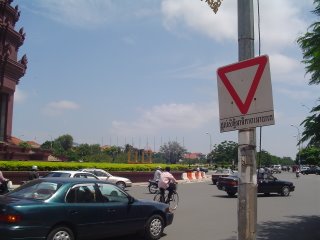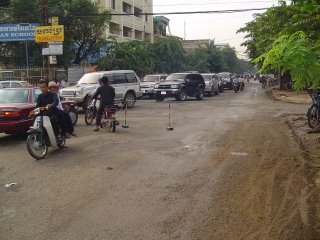Today's (October 25, 2006) 'Letter to the editor' in the Cambodian Daily:
City officials should obey traffic laws
I'm so tired of having to risk my life walking on crowded city streets because I am unable to walk on blocked-up sidewalks. I have nearly been run over more than twice this month.
Public disorder is under the jurisdiction of the municipality. But earlier this month, I was left speechless when I saw a Phnom Penh vice-govenor and a karaoke star-turned-district official park their flashy Toyota Land Cruisers right accross the pavement on a busy street near my apartment.
Their parking behavior was not only a classic example of what not to follow, it is also a slap in the face to godd drivers and citizens alike.
Well-respected leaders lead by example. Obey the law first and the general public will follow suit.
Vuth Chansarei Phuon, Phnom Penh







